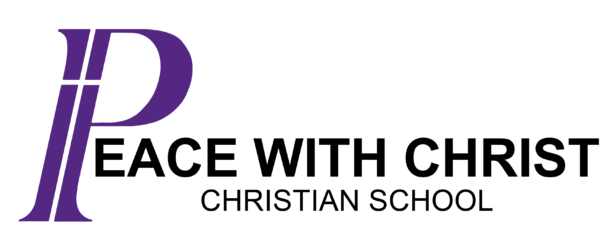3RD GRADE CURRICULUM
An integrated reading and language arts program offers a wealth of literature. Reading is an interactive process of constructing meaning. Students learn, practice, and apply strategies as part of this dynamic process. Authentic literature provides a richness of opportunities for children to interact with concepts and ideas, setting the foundation for a lifelong love of reading. Effective instruction is meaning- based and integrates listening, speaking, reading, writing, spelling, and thinking. Activities immerse children in a print-rich environment allowing the teacher to capitalize on the children’s natural curiosity about print and language. A wide variety of instructional activities provide for different learning styles. Multicultural literature and activities enable children to appreciate cultural diversity, to grasp the concept that all groups have contributed to society, and take pride in cultural heritage.
Handwriting
Handwriting helps students gain fluency and legibility. Practical writing applications of handwriting skills empower students to produce effective written communication. Step-by-step instruction offers an easy visual aid for forming each letter and stroke. Manuscript and cursive forms are clear and simple. Contemporary continuous stroke alphabet eases the transition from manuscript to cursive. Skills are introduced and reinforced at appropriate levels of student development throughout the year. Real world writing applications and integration of the language arts take students beyond isolated letter practice and turn handwriting activities into meaningful learning that are to be used on a day to day basis.
Math
Children use simulations and games to learn and practice new concepts. They will skip count whole numbers, compare and order numbers; identify place value; identify ordinal position to twentieth; identify and complete patterns; solve routine and non-routine problems; master all basic addition and subtraction, multiplication, and division facts; add and subtract multi-digit numbers; multiply multi-digit numbers by a single-digit number; divide by single-digit divisors; picture, and order fractions; add and subtract fractions with common denominators; measure to the nearest quarter inch, millimeter, foot and yard; identify the volume of standard containers; compare and measure mass; measure perimeter and area; tell time to the minute; determine elapsed time; count money; make change for a dollar; identify angles; identify lines of symmetry; identify function rules; graph ordered pairs on a coordinate graph; tally; and create, read, and write observations for real graphs, pictographs, bar graphs, Venn diagrams, and line graphs.
Religion
Through the Word and Spirit of God, students may know God, especially His seeking and forgiving love in Christ; respond in faith and grow up into Christian maturity; see themselves as reconciled and redeemed; live in peace with God, themselves, and in fellowship; express their joy in worship and in service to others; value all of God’s creation, witness to Christ as Savior of all people; participate in God’s mission; and live in Christian hope.
Science is taught as an integrated program, which invites students to explore real-life situations and to think about real-world challenges. And it motivates them by revealing how strongly science impacts their world – and how they themselves can act to make a difference. Students learn about plants and animals and how they interact with each other, earth’s land forms and how they change, the water cycle and how to observe weather. Energy causes change in matter and can itself be changed from one form to another. The earth’s natural resources include vital materials and many forms of energy. Living things use matter and energy to meet their basic survival needs. Human responsibility for the environment involves the conservation and wise use of energy and other natural resources. Many kinds of scientific inquiry involve the processes of observing and applying prior knowledge. The student learns how animals move and how we convert that movement energy to other things.
Social Studies
communication. People are an important resource of our country. Many different jobs require people to work together.
Art
Children will continue to build on their artistic abilities as they learn the history of each artist studied. Students will begin to build their art vocabulary as they continue to build on the skills learned. They will use the skills they have developed to make reproductions of the artist we study throughout the year. Students will begin to see God’s hand in the art world.
Technology
Computer classes build on what is learned in the previous years. Students will learn about digital citizenship and how to stay safe on the internet. Students will work heavily in Typing Club to really develop their keyboarding skills. Students will start learning about the Google Platforms: Gmail, Google Drive, Google Sheets and Google Classroom. Students will be introduced to an integrated coding program called Scratch.
Music
Students will learn that music is an important part of the lives of all people and cultures. Music can enhance and support all other subject areas and can have a profound effect on every student. From specific music selections students will focus on beat, tempo, meter, tone, chords, phrases, form, melody, and rhythm. Students will discover music through reading, singing, moving, listening, and playing instruments.
Physical Education
Third graders begin to demonstrate controlled movement through general space. Games and activities take on more organization; strategies and teamwork have greater emphasis than before. Skills such as catching, throwing, kicking, striking, and some volleying begin to develop. Rope jumping, relays, modified net games, balancing, and rhythm skills are improving. Sportsmanlike conduct and individual strengths are emphasized.
Character Building
The topics covered are: Slippery Slope, What Causes Conflict, Consequences, Blame Game, Conflict as an Opportunity, Resolving Conflict, forgiveness, Altering Choices, Think Before you Speak, Communication, and Making a Respectful Appeal. These topics are covered in a 3-year rotation between grades 3-5.
One in Christ -Concordia Publishing House, 2011
Saxon Math -Saxon Publishers, 2008
Interactive Science –– Pearson, 2016
A Reason for Handwriting – Concerned Communications, 2010




